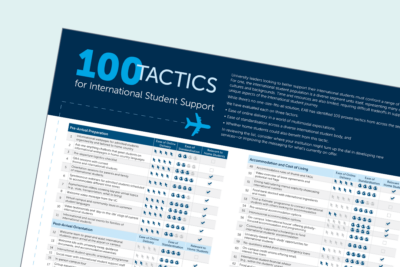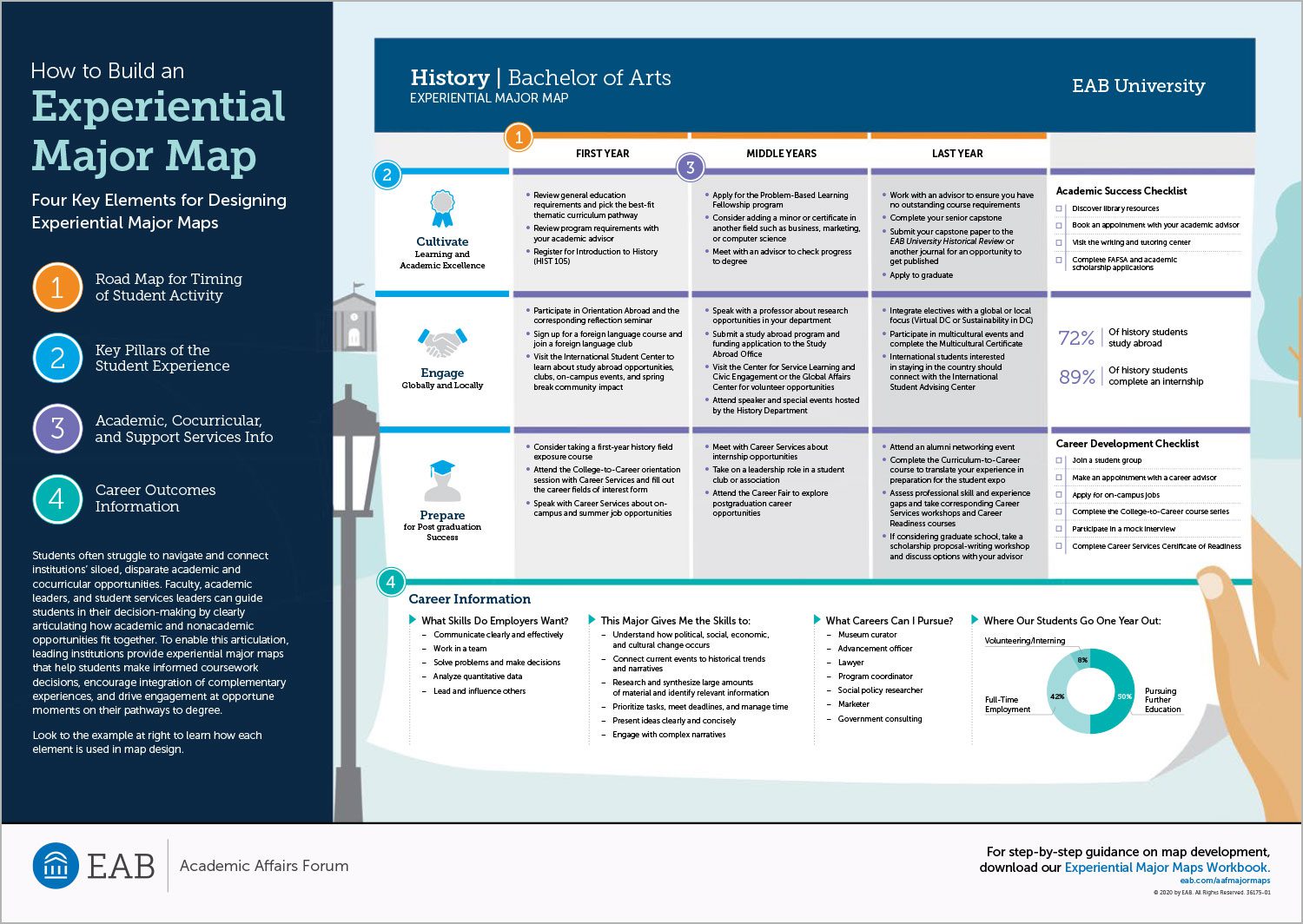Navigating the student journey with experiential course maps
Most programme heads can describe how the academic components of a course of study fit together. But department-generated plans often fail to communicate to students the many learning opportunities outside of the classroom that contribute to their overall experience and education.
Experiential course maps offer a solution. They help students see their university experience as a journey in which they are in the driver’s seat. They prompt students to make informed coursework decisions, become involved with local and global communities, consider diverse career pathways, and remain engaged at critical moments along the path to a degree and their desired post-graduation destination.
The most effective experiential course maps share four common components. Browse the infographic below to explore these components in a sample map for a course in History at the fictional EAB University. Alternatively, if your institution uses a North American model for programmes (e.g., ‘major’ rather than ‘course’), check out this infographic here.
The use cases and benefits of experiential course maps are many. Consider the following possibilities, and then visit the toolkit to bring this idea to life on your campus:
- Set expectations and nudge students towards impactful experiences and milestones during orientation
- Spark conversations between students and advisers about decisions that lead to positive post-graduation outcomes
- Assure prospective students that your institution offers holistic support across a course of study
- Equip students with the language to discuss their learning experiences in terms of transferable skills
- Define and communicate the unique value of a degree from your institution.
More Resources

100 tactics for international student support

